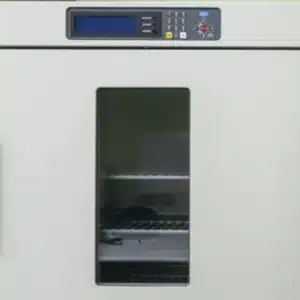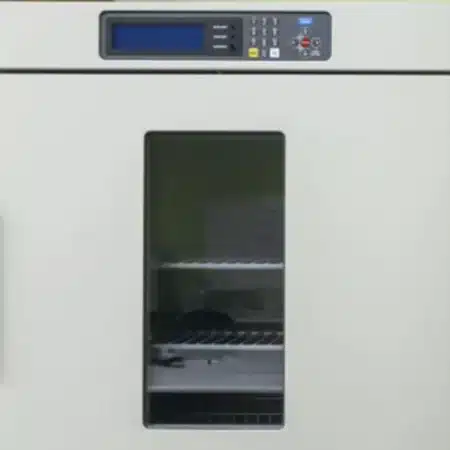Having a Honeywell thermostat that fails to turn on the heat can be frustrating, especially during the chilly winter months.
However, before you start worrying about costly repairs or replacements, there are several potential causes and troubleshooting steps you can take to resolve the issue.
In this article, we’ll guide you through a detailed troubleshooting process to help you get your heating system up and running efficiently.
Potential Causes
Here is a list of potential causes for a Honeywell thermostat not turning on the heat:
- Power supply issues: The thermostat may not be receiving power due to tripped circuit breakers, blown fuses, or improper connections.
- Incorrect temperature settings: If the desired temperature set on the thermostat is lower or equal to the current room temperature, the heating system won’t activate.
- Incorrect thermostat mode: If the thermostat is set to “Cool,” “Off,” or another mode instead of “Heat,” it will prevent the heating system from turning on.
- Programming conflicts: Scheduling conflicts or setbacks in the thermostat’s programming may prevent the heat from turning on at the desired time.
- Incorrect thermostat settings: Additional settings on the thermostat, such as fan settings, system cycle rate, or temperature differential, may impact the operation of the heating system if configured incorrectly.
- Low battery levels: If the thermostat is battery-powered, low battery levels can cause it to malfunction and prevent the heat from turning on.
- Issues with the furnace or boiler: Problems with the heating system itself, such as power supply issues, error codes, or malfunctioning components, can prevent the heat from turning on.
These potential causes will you to consider and addressed the troubleshooting process to identify and resolve the issue with a Honeywell thermostat not turning on the heat.
Troubleshooting guide
This troubleshooting guide will help you to maintain the problem of Honeywell that fails to turn on, it includes:
- Check the Power Source: The first step is to verify if your Honeywell thermostat has power. Check the display to ensure it’s illuminated, indicating a power supply. Additionally, make sure the thermostat is properly connected to a power source. Inspect the circuit breakers in your electrical panel and look for any tripped breakers. Also, check for blown fuses that might be affecting the power supply to the thermostat. Reset any tripped breakers and replace blown fuses as necessary.
- Adjust Temperature Settings: Next, check the temperature settings on your thermostat. Ensure that the desired temperature setting is higher than the current room temperature. If the desired temperature is lower or equal to the current room temperature, the heating system won’t activate. Increase the temperature setting and see if the heat turns on.
- Check Thermostat Mode: Make sure your thermostat is set to the correct mode for heating. It should be set to “Heat” mode and not “Cool,” “Off,” or any other mode that would prevent the heating system from operating. Check the mode settings and switch to “Heat” if necessary.
- Verify Programming: Review the programming on your thermostat. Look for any scheduling conflicts or setbacks that might prevent the heat from turning on at the desired time. Adjust the programming as needed or temporarily override it to test the heating system. Confirm that the programming is not causing any conflicts or interruptions.
- Inspect Thermostat Settings: Take a closer look at the thermostat settings. Some Honeywell thermostats have additional settings that can affect the operation of the heating system. Check the fan settings, system cycle rate, and temperature differential to ensure they are configured correctly for your heating system. Make any necessary adjustments based on the manufacturer’s recommendations.
- Replace Batteries: If your Honeywell thermostat is battery-powered, low battery levels can cause it to malfunction. Replace the batteries with fresh ones and see if that resolves the issue. Be sure to follow the manufacturer’s instructions for battery replacement, including proper battery type and installation.
- Check Furnace/Boiler: Inspect your furnace or boiler to ensure it’s receiving power and functioning correctly. Check for error codes or warning lights that might indicate an issue with the heating system itself. If you notice any irregularities, consult the manufacturer’s manual or consider contacting a professional HVAC technician for further assistance.
- Test the Thermostat: Perform a manual test by setting the thermostat a few degrees higher than the current room temperature. This test helps determine if the thermostat is functioning properly. If the heating system doesn’t turn on, proceed to the next step.
- Troubleshoot Wiring: If you’re comfortable working with electrical wiring, you can check the thermostat’s wiring connections. Ensure that they are secure and properly connected. Refer to the thermostat’s manual or consult a professional if you need guidance on identifying and troubleshooting wiring issues.
- Call a Professional: If you’ve exhausted all the above steps and your Honeywell thermostat still won’t turn on the heat, it’s time to seek professional help. Contact an HVAC technician or a qualified electrician who can diagnose and resolve the issue effectively and safely.
Conclusion
Dealing with a Honeywell thermostat that won’t turn on the heat can be frustrating, but with this troubleshooting guide, you can take steps to identify and resolve the issue.
By systematically checking the power source, adjusting temperature settings, verifying thermostat mode, reviewing programming, inspecting thermostat settings, replacing batteries, checking the furnace or boiler, and testing the thermostat, you can troubleshoot common causes of heating system malfunctions.
Remember to consult your specific Honeywell thermostat model’s manual for detailed instructions and troubleshooting tips tailored to your device. If all else fails, don’t hesitate to reach out to a professional HVAC technician or electrician who can provide expertise and assistance in diagnosing and resolving the issue.
Q1: Why is the heat not turning on when I adjust the temperature on my Honeywell thermostat?
A1: There are a few possible reasons why the heat may not be turning on with your Honeywell thermostat: Check if the thermostat is set to the correct mode (heat mode) and the desired temperature is higher than the current room temperature. Ensure that the circuit breaker or fuse for the heating system is not tripped or blown. Verify that the power to the heating system is on. Make sure the thermostat is properly wired and connected to the heating system. Check for any loose or disconnected wires. Check if the heating system's pilot light (if applicable) is lit. If it's not lit, follow the manufacturer's instructions to relight it. If none of these steps resolve the issue, it's recommended to contact a professional HVAC technician to inspect and diagnose the heating system.
Q2: My Honeywell thermostat displays "Heat On," but I don't feel any warm air. What should I do?
A2: If your Honeywell thermostat indicates that the heat is on, but you're not feeling any warm air, consider the following: Check if the air filters in your heating system are dirty or clogged. Dirty filters can restrict airflow and affect heating performance. Replace or clean the filters if necessary. Ensure that all the supply vents in your home are open and not blocked by furniture or other objects. Blocked vents can restrict airflow and reduce the effectiveness of heating. Verify that the heating system's ductwork is intact and properly insulated. Leaks or gaps in the ductwork can result in heat loss before it reaches the rooms. If the issue persists, it's recommended to contact an HVAC professional to inspect the heating system for any underlying issues or malfunctions.
Q3: My Honeywell thermostat is set to heat, but it doesn't activate the heating system. What could be the problem?
A3: If your Honeywell thermostat is not activating the heating system despite being set to heat mode, consider the following troubleshooting steps: Verify that the thermostat is receiving power. Check if the display is lit and responsive. If not, check the power source, batteries (if applicable), and any circuit breakers or fuses connected to the thermostat. Make sure the thermostat is correctly wired and connected to the heating system. Review the installation manual or consult a professional if needed. Check if the thermostat's temperature setting is higher than the current room temperature. If the room temperature is already higher than the desired temperature, the heating system won't activate. If you've recently replaced the thermostat, ensure it is compatible with your heating system. Some systems require specific thermostat models or configurations. If the issue persists, it's best to consult an HVAC technician to diagnose any potential issues with the thermostat or the heating system itself.
Q4: How can I reset my Honeywell thermostat to troubleshoot heating issues?
A4: To reset your Honeywell thermostat, try the following steps: Locate the reset button on the thermostat. It is typically a small, recessed button that may require a paperclip or a similar tool to press. Press and hold the reset button for about 5-10 seconds until the display on the thermostat goes blank or resets. Release the reset button and wait for the thermostat to restart. Follow the on-screen prompts to reconfigure the settings. Note that resetting your thermostat will erase any custom settings or schedules, so you'll need to reprogram them after the reset.
Q5: Is it normal for my Honeywell thermostat to have a delay before the heat turns on?
A5: A slight delay before the heat turns on after adjusting the temperature on your Honeywell thermostat is normal. This delay is often due to the time it takes for the heating system to start up and reach the desired temperature. The duration of the delay can vary depending on factors such as the type of heating system, the size of the space being heated, and the temperature differential between the current and desired temperatures. If the delay is excessive or you notice a significant delay compared to normal operation, it's advisable to check the thermostat settings, ensure proper wiring and connections, and consult the thermostat's user manual or contact Honeywell support for further assistance.






